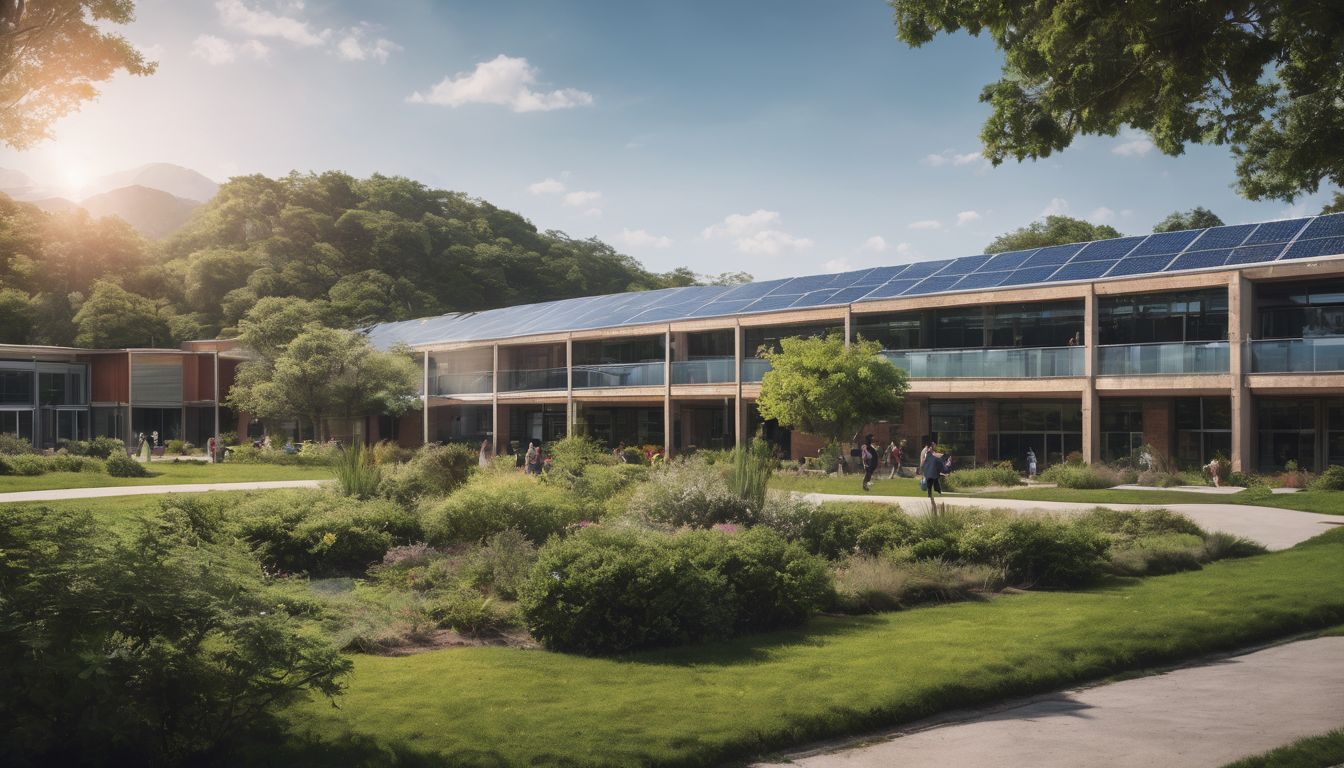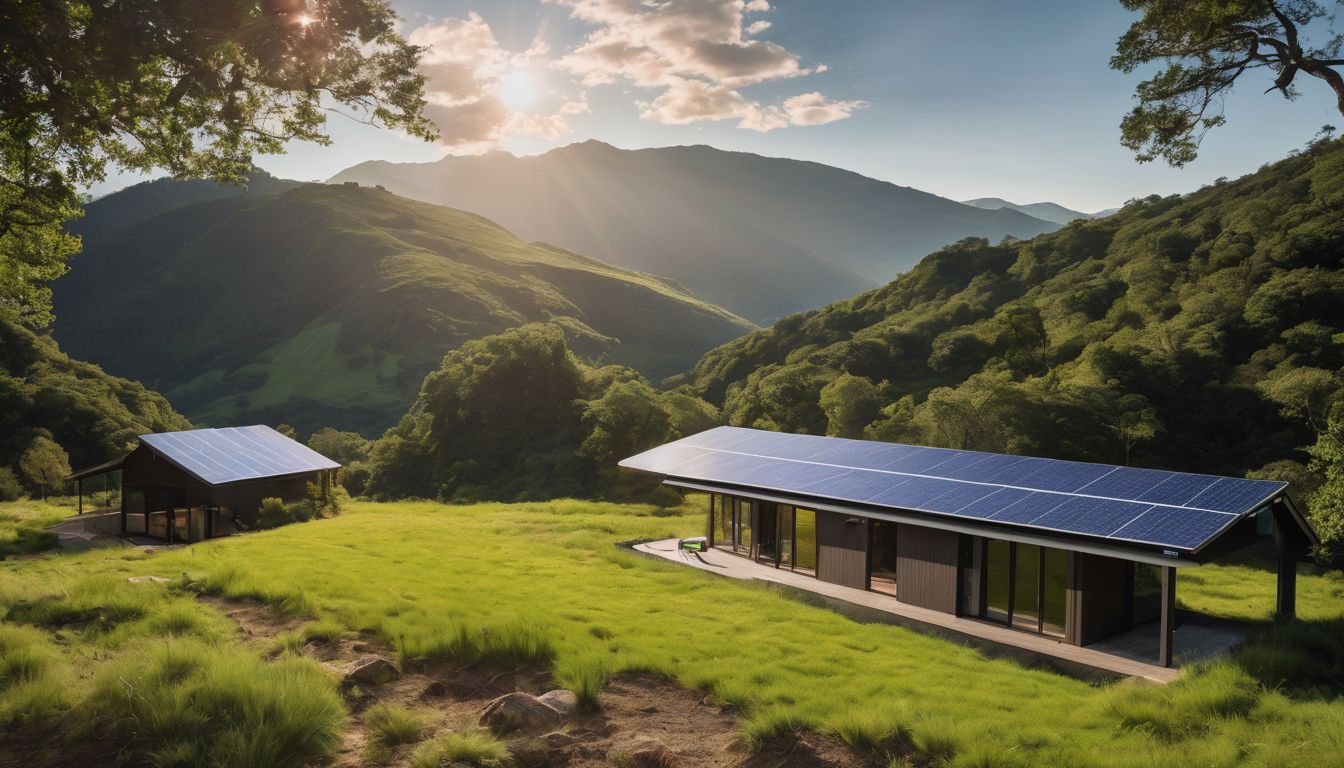Understanding the world around us grows more challenging as environmental issues and inequality collide. Studies reveal that socioeconomically disadvantaged populations often face the worst of our planet’s environmental problems.
Our article delves into how education can bridge the gap between understanding and action, providing a beacon of hope for both people and the planet. Discover how learning lights the way to justice.
Key Takeaways
- Education about environmental justice raises awareness of how marginalised communities face unequal exposure to pollution and limited access to natural resources.
- Schools teaching environmental justice can inspire students to question current power structures and lead them towards advocating for fair policies that protect everyone’s right to a clean environment.
- Understanding the concept of intersectionality is key in recognising how social issues like race, gender, and class intertwine with environmental challenges, affecting both people and nature.
- Challenges in implementing education on environmental justice include lack of resources, resistance to change within educational systems, and a need for curriculum inclusivity.
- Individuals can make significant contributions by getting involved with local eco – friendly initiatives, adopting sustainable practices in their daily lives, and supporting policies that aim at reducing environmental inequities.
Understanding Environmental Justice
Environmental justice refers to the fair treatment and meaningful involvement of all people, regardless of race, class, or income, in environmental decision-making. It is crucial to address environmental injustices in order to create a more equitable and sustainable world.
Definition of environmental justice
Environmental justice champions the fair treatment and meaningful involvement of all people regardless of race, colour, national origin or income with respect to the development, implementation and enforcement of environmental laws, regulations and policies.
It aims to ensure that everyone enjoys the same degree of protection from environmental hazards and equal access to decision-making processes that affect their environment. This principle strives for healthy environments across communities where disadvantaged groups often face greater exposure to pollution and limited opportunities for ecological benefits.
Fair distribution of environmental advantages and burdens defines this movement’s core. Better policies seek to redress imbalances where marginalised communities disproportionately suffer from industrial emissions, poor water quality, toxic waste, and climate change impacts.
Environmental justice insists on an equitable sharing of ecological privileges such as clean air and water while also demanding comprehensive inclusion in policy conversations about land use, energy production and waste management which together shape our living spaces.
Importance of addressing environmental injustices
Addressing environmental injustices is crucial for creating a fair and sustainable world. Marginalised communities often bear the brunt of environmental degradation, facing disparities in access to clean air and water, as well as suffering from health issues due to environmental impacts.
By addressing these injustices, we can work towards achieving equity in environmental resources and promoting social justice. Educating ourselves about these issues is essential for building a more inclusive and environmentally conscious society.
Promoting environmental justice not only benefits marginalised communities but also ensures the protection of our planet’s ecological balance. Addressing discrimination in access to environmental resources and combating environmental racism are vital steps in creating a more equitable world.
Intersectionality: The Overlapping of Injustices
Intersectionality refers to the interconnected nature of social categorisations such as race, class, and gender, as they apply to a given individual or group. In the context of environmental justice, it highlights how marginalised communities face multiple forms of injustice and discrimination that intersect with environmental issues.
Definition of intersectionality
Intersectionality acknowledges that individuals can experience interconnected forms of discrimination and oppression based on factors such as race, gender, class, and more. It recognises that these identities overlap and intersect, shaping a person’s experiences in society.
This concept is crucial when examining environmental justice because it highlights how marginalised communities often face multiple environmental injustices due to the intersection of various social, economic, and environmental factors.
Understanding intersectionality is essential for addressing environmental disparities effectively. By recognising the complex interplay of different forms of discrimination within environmental issues, efforts towards achieving equity and sustainability can be more inclusive and impactful.
How marginalised communities and the environment are affected
Marginalised communities are disproportionately affected by environmental injustices, facing higher exposure to pollution and lack of access to clean air and water. This leads to increased health disparities, exacerbating existing social inequalities.
Additionally, these communities often bear the brunt of climate change impacts due to their vulnerability and limited resources. Their voices are frequently unheard in policy-making processes, further perpetuating environmental inequities.
The environment itself also suffers as a result of these injustices, with ecosystems being degraded due to unsustainable practices that disproportionately affect marginalised areas.
Education and Environmental Justice
Education plays a crucial role in promoting environmental justice, as it helps individuals understand the interconnectedness of social and environmental issues. By teaching about environmental justice in schools, we can empower future generations to advocate for fair access to clean air, water, and sustainable resources.
The role of education in promoting environmental justice
Education plays a crucial role in promoting environmental justice by raising awareness about the unequal distribution of environmental resources and the impact of pollution on marginalised communities.
Through education, individuals can develop a deeper understanding of climate justice, environmental health disparities, and sustainable development. Teaching about environmental justice in schools helps cultivate a sense of responsibility towards fair access to clean air and water, as well as encouraging proactive participation in advocating for equitable environmental policies.
By integrating climate change education and environmental literacy into curricula, educational institutions empower students to become advocates for social justice and environmental sustainability.
Teaching about environmental justice in schools
Schools play a crucial role in educating young people about environmental justice. By incorporating environmental justice curricula and activities, students can gain an understanding of the intersectionality of injustices and their impact on marginalised communities.
Educators can integrate real-world examples into lessons, fostering critical thinking around issues of climate change, pollution, and access to resources. Through this approach, students develop a sense of responsibility towards creating a more equitable and sustainable future.
Bringing environmental justice into the classroom empowers students to become advocates for change within their communities. Engaging lessons on environmental policy, systemic reviews, and climate justice education equip them with the knowledge to address pressing ecological concerns.
Challenges and Solutions
Implementing effective environmental justice education faces challenges such as limited resources, resistance to change, and the complexity of intersecting issues. Solutions include advocating for inclusive curriculum, providing professional development for educators, and fostering partnerships with community organisations.
Challenges in implementing effective environmental justice education
Ways to overcome these challenges
- Engage in community outreach and activism to raise awareness about environmental justice issues.
- Advocate for inclusive and diverse curriculum that highlights the intersectionality of environmental injustices.
- Utilise technology and digital platforms to reach a wider audience and educate individuals about environmental justice.
- Collaborate with local organisations and experts to develop effective educational resources and programmes.
- Encourage policymakers to support legislation that promotes comprehensive environmental education in schools.
- Foster partnerships with academic institutions to promote research and innovation in environmental justice education.
Empowering Change
– Education plays a crucial role in empowering individuals to advocate for environmental justice and work towards creating a more sustainable world. It’s important for individuals to understand their power in making a difference and take actionable steps towards positive change.
The impact of education on creating a more just and sustainable world
Education plays a crucial role in shaping a more just and sustainable world. By equipping individuals with knowledge about environmental justice, schools can empower students to advocate for equitable treatment of all communities and the planet.
Through education, individuals gain an understanding of the interconnectedness between social injustices and ecological issues, leading to informed and conscientious decision-making.
Teaching about environmental justice in schools fosters critical thinking skills that prompt students to question existing power structures and advocate for change within their communities.
As a result, educated individuals are better equipped to address systemic inequalities and work towards creating a fairer society where all members have equal access to clean air, water, and healthy environments.
How individuals can get involved and make a difference
Individuals can get involved in environmental justice and make a difference by taking action in their communities. Consider the following ways to contribute:
- Participate in local environmental clean – up events to help maintain the ecological balance in your area.
- Advocate for sustainable practices within your workplace or community organisations by promoting recycling, reducing waste, or implementing energy-saving measures.
- Support and engage with environmental justice groups and initiatives that aim to address systemic inequalities and protect natural resources.
- Educate yourself about environmental issues and share your knowledge with others to raise awareness and promote positive change.
- Engage in environmentally friendly lifestyle choices such as reducing single-use plastic, conserving water, and supporting eco-friendly businesses.
Conclusion
In conclusion, education plays a vital role in promoting environmental justice and empowering communities to create change. By teaching about environmental injustices in schools, we can raise awareness and inspire future generations to work towards sustainability.
Getting involved and taking action are essential steps towards creating a more just and equitable world for all. We must continue to educate ourselves and others, as collective effort is key in addressing environmental injustices.
FAQs
1. What is the intersection of education and environmental justice?
The intersection of education and environmental justice explores how learning about ecology can help us understand the fair treatment of all communities when addressing environmental issues.
2. Why should we study both environmental justice and education together?
Studying both subjects together shows how educating people plays a key role in promoting fairness, especially for marginalised communities impacted by ecological problems.
3. How does environmental injustice affect marginalised communities?
Environmental injustice often means that marginalised communities face more pollution and have less access to clean air, water, and natural resources compared to other groups.
4. What does a systematic review tell us about this intersectionality in environmental justice?
A systematic review examines lots of studies carefully to reveal how different forms of discrimination overlap with ecological challenges, helping us find better solutions for everyone.





